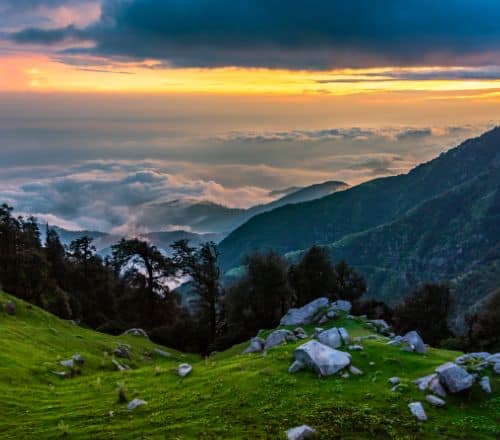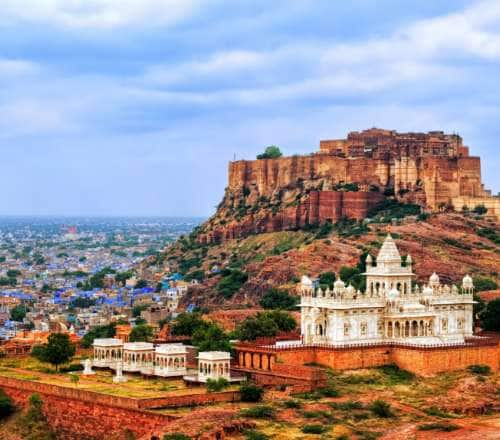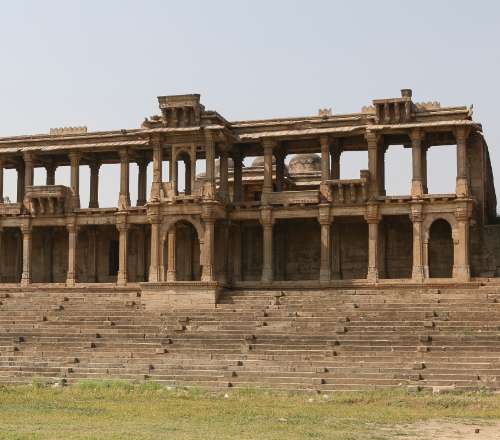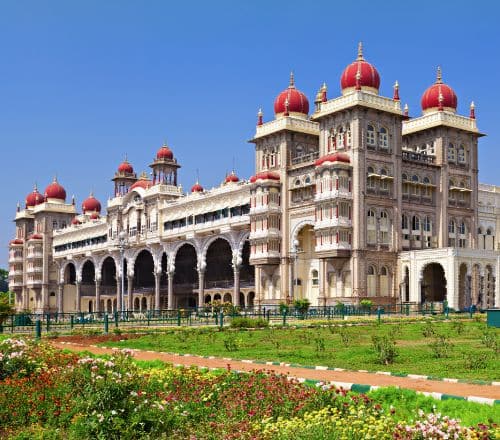Stay logged in to proceed with bookings, orders and offers.
On changing the terminal, you will loose items in your cart. Are you sure you want to change your terminal?
Experience the beautiful amalgamation of the old with the new in the state capital of Odisha.
Bhubaneswar, the ‘smart’ capital of Odisha, is my home. I have always been proud of its history and culture. The city is known for it rich historical and archaeological remnants. Home to more than 2,000 temples, built between the 7th and 12th centuries AD, it was also known as 'Mandarmalini' or a garland of temples. If you are looking for a getaway destination that's immersed in history and culture, the city will not disappoint. Bhubaneswar was established as the capital of Odisha in 1948. Currently, it is one of the fastest-growing cities in the country. After hosting the Hockey World Cup, twice in a row, and a plethora of gala sporting events, it has also earned the sobriquet as the sports capital of India.
Read More
Read Less
The 6th to the 16th century marked the golden period of temple construction in Odisha, earning it the moniker "City of Temples". The Mughal invasion during the latter half of the 16th century ended this period. The Lingaraj and Mukteswar Temples particularly stand out in the city. History is depicted on their walls through immaculate artistry. The motifs, sculptures, and design are the epitome of Odissan temple architecture.
Lingraj Temple is one of the state's most sacred temples, and dates back to the 11th century AD. I am always amazed by its imposing height, towering over almost fifty other smaller shrines in the same complex. Surrounded by a thick laterite wall, it is considered a perfect example of a Hindu temple in Odisha. Due to its seamless design and impeccable craftsmanship, it is regarded as a great piece of the Kalinga style of architecture.
This is one of my favourite temples in India, purely for its intricate carvings. Though much smaller in stature and size than the Lingaraj Temple, Mukteswar is considered the epitome of Odissan architecture. Every inch of the temple is replete with carvings, each with its own story. I particularly love the famed stone archway, which serves as the virtual gateway to the temple. It is inspired by Buddhist lineage and is flanked by strong pillars decorated with carved beads and ornaments.
I have always been amused by this temple, reminiscent of Khajuraho in Bhubaneswar. Its outer walls have lovely geometrical patterns and erotic figurines. Unlike any other in Odisha, this temple has no idol inside it—it's empty. What's even more intriguing is that there is no history about its maker. Set inside a sprawling garden complex, Raja Rani Temple, as per a few historians, might be the result of a clandestine affair between a Kalinga king and a Khajuraho princess.
This is another unusual temple of Bhubaneswar. The inner sanctum holds a huge Shiva Linga. It's 9 ft in height and 12.5 ft in circumference. This 900-year-old temple doesn't have any intricate carvings, figurines or motifs, unlike its counterparts. Its design and architecture are also very different from the Kalinga style. The temple is mired in controversy. Some historians believe the Shiva Linga is part of a Buddhist Ashokan Pillar. Over a period of time, the pillar got eroded, and it was sculpted as a Shiva Linga. The current temple was then built around it.
The beautiful dark saffron-coloured Ram Mandir lies in the heart of the city. Built by a private trust, this is one of the prettiest temples of Odisha, with impeccably decorated interiors. Apart from the main deities of Lord Ram, Lakshman and Sita, there are also idols of Lord Shiva and Hanuman. I love spending evenings in its sprawling courtyard!
I became a huge fan of these ancient Jain caves, built around the 1st or 2nd century BC. It is a very peaceful experience to sit in one of these caves and muse about how the Jain monks meditated in these fascinating enclosures. Even during peak summers, these stone caves feel cool. There are several beautiful carvings and depictions on the rock-cut shelters. Originally, there were 117 caves, of which only 33 remain, the rest lost with the passage of time. Every time I visit the site, it is fascinating to think about how such caves would have been arduously carved out by hand using rudimentary tools.
One of my favourite places in Bhubaneswar is the magnificent white peace pagoda atop Dhauli Hill. It is said that King Asoka of the Mauryan dynasty sat at this very place and looked at the extent of devastation caused by his invasion of Kalinga. The battle was fought on the banks of the Daya River, which flows just below the hill. Legend has it that the river turned red due to the bloody battle. The gory scenes transformed his heart, and he decided to lay down weapons and propagate a religion of peace for the rest of his life. The Kaling Nippon Buddha Sangha (the joint collaboration of Japanese Buddhist devotees and the Government of Odisha) built this peace pagoda in 1972 to commemorate this important historical event. Lord Buddha can be seen in his various poses of nirvana on the four sides of the structure. Made up of white marble, this beautiful pagoda can be seen from quite a distance.
Easily one of the most sought-after tourist places in Odisha is the Nandankanan Zoo. I have always been amazed by its diversity of flora and fauna. My top experiences were the Lion Safari and the White Tiger Safari, the latter being the first ever such safari in the world—it feels like being in the middle of a forest! Nandankanan was the first zoo in India to join WAZA or the World Association of Zoos and Aquariums. With close to 1,200 birds, approximately 900 mammals, around 250 reptiles and 15 aquariums, it is one of the largest zoos in Southeast Asia. If you are planning a getaway to the city, the best time to visit is from October to February.





The Adani One expressly disclaims all liability, direct and indirect, in respect to actions taken or not taken based on any or all the contents of this Blog. The Blog is an opinion of the contributor based on the collation of data from various sources and is provided only for information purpose. Adani One does not canvass, advertise, solicit, invite or induct for any product, merchandise, information, brand or any other materials mentioned in the Blog, nor does it obtain any monetary benefit from the same. Reader is advised to read and apply his/her intellect and discretion in this regard. Any Intellectual Property mentioned in this blog belongs to the rightful owner. We do not intent to claim any interest over the same.